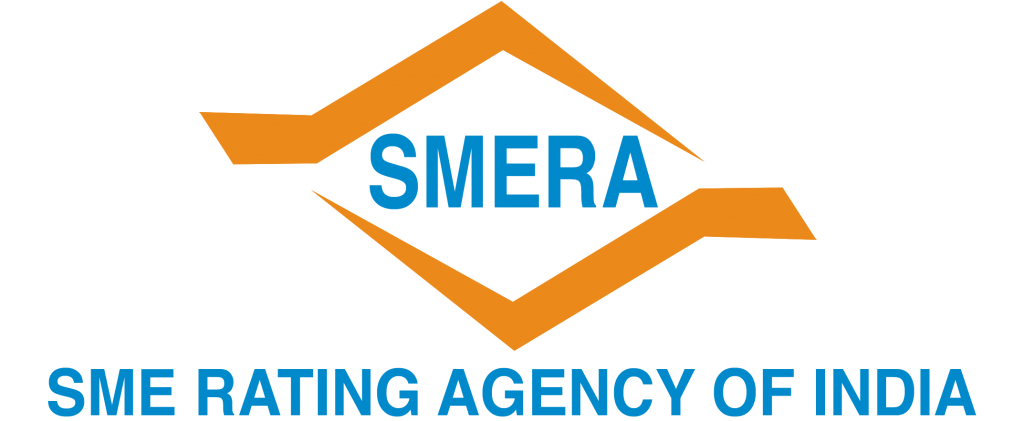MSME Financing in growing markets & Why India needs SMERA
“A big business starts small.”
— Richard Branson
Even in a favourable scenario, running a small business has its challenges. Changing regulations often create barriers. When skills are in short supply, both at the workforce and administrative levels, it’s quite an ask to stay competitive in this ever-changing business world. Apart from other issues like a lack of social security and safety hazards, access to finance is the fundamental challenge that business entities, especially Micro, Small and Medium Enterprises (MSMEs), face when they launch themselves in the market.
MSMEs function with the unfortunate tag of being ‘riskier borrowers’ owing to their modest stature. They’re the first to feel the impact of economic downturns when banks reduce credit. Let alone scaling up, even survival in such scenarios becomes a matter of grim struggle.
Let’s examine how MSMEs are financed in some of the emerging markets.
MENAP (Middle East, North Africa, Afghanistan, and Pakistan) and Caucasus and Central Asia (CCA) countries have the lowest levels of financial inclusion of MSMEs in the world.
Worldbank.org, citing International Finance Corporation (IFC) data, claims that 65 million businesses or 40% of formal MSMEs in developing countries have unmet financial needs of US$5.2 trillion annually. It notes that East Asia and the Pacific account for the largest share (46%) of the total global funding gap, followed by Latin America and the Caribbean (23%) and Europe and Central Asia (15%). The Middle East and North Africa regions have the highest percentage of funding gaps in proportion to their demand at 87% and 88%, respectively.
About half of the formal SMEs have no access to formal credit. The financial gap is greater when micro-enterprises and informal enterprises are considered. Lest forgotten, the success of these business entities is reliant on the larger economic, commercial, and political environment in which they function. It takes decades for the SME ecosystem to form, and even in industrialised nations where such businesses are already thriving (such as Germany and Italy), the ecosystem, owing to funding gaps, is far from perfect.
Still MSMEs are indispensable
Yet, it’s irrefutable that SMEs and MSMEs regulate the health of economies. Worldbank.org writes: “Formal SMEs contribute up to 40% of national income (GDP) in emerging economies. These numbers are significantly higher when informal SMEs are included. According to our estimates, 600 million jobs will be needed by 2030 to absorb the growing global workforce, which makes SME development a high priority for many governments around the world.”
The number of mushrooming MSMEs in the world complements these numbers. There are close to 5.9 million small businesses in the UK, claims the IWOCA. Nearly 60% of the workforce in the private sector in the UK is employed by SMEs.
Additionally, SMEs contribute to most of the innovations across all geographies there. In the US, small businesses account for 99% of all firms, over 50% of the private sector employment, and over 50% of the non-farm GDP. During the past two decades, almost two-thirds of net new jobs in the US have been produced by small businesses. In Australia, almost 2 million SMEs comprise around 70% of all industry employment (Source: Infosys).
So, how do developed countries address the financing gaps?
How the government steps in…
Credit guarantees backed by the government are common in many emerging nations in Asia, Africa, and Europe. In this scheme, the federal government sets up an organisation or trust with senior-level bureaucrats and officials. A credit guarantee is a fund which supports loans taken by businesses as a form of collateral. This assures lenders in the form of banks and financial institutions to willingly sanction loans. The government backs the loan up to 80% of the borrowed capital (Source: fmc.org.in).
The Asia Global Institute highlights how in Germany the government takes the lead to support SMEs by reducing red tape to sanction loans, offering tax incentives, promoting research and development programmes and providing seed funding. The chambers of commerce are the main drivers of SME development in this nation.
Other countries such as Singapore, South Korea and Malaysia have a one-stop institution formed for coordinating and approving all SME development efforts both at the private sector and government levels. SPRING (Standards, Productivity and Innovation for Growth) set up by the Singapore government facilitates funding to SMEs and offers support to businesses focused on innovation. South Korea has SME programmes like Global Stars and Inno-Biz to aid the globalisation of MSMEs.
Several Chinese cities have SME business parks to offer support in the form of physical infrastructure, legal assistance, and SME-focused banks. China has amped up technology such that MSMEs can efficiently coordinate among different institutions for their businesses.
At this point, let’s turn the page to India.
Support galore
Recently, the Indian government revamped the credit guarantee scheme for MSMEs through the infusion of Rs 9000 crore in the corpus. Furthermore:
- Initiatives like Aatmanirbhar Bharat Package ensured the continuity of businesses during the pandemic.
- Emergency Credit Line Guarantee Scheme (ECLGS) has delivered more credit to over 130 lakh MSMEs.
- Rs 2 lakh crore additional credit for MSMEs has been earmarked under the Credit Guarantee Trust for Micro and Small Enterprises (CGTMSE).
- For greater credit facilitation, Udyam, e-Shram, National Career Service (NCS) and Aatmanirbhar Skilled Employee Employer Mapping (ASEEM) portals have been interlinked.
- A Raising and Accelerating MSME performance (RAMP) programme with an outlay of Rs 6,000 crore has been introduced (Source: gov.in)
But there’s only so much government subsidies can do.
More needs to be done…
Understandably, the role of SME rating agencies has come into sharp focus. SME rating is an indicator of a company’s overall creditworthiness, based on an analysis of its financial and operational strengths. A good rating helps MSMEs gain banks and lenders’ trust and obtain credit, quickly and cheaply. It improves visibility which also serves as a useful marketing tool.
Apart from assessments, an SME rating agency provides in-depth reports on the strengths and areas of improvement of the rated company. It becomes a strong self-improvement tool for these business entities to boost operations.
It has been reported in this space that financial institutions and banks, all traditional institutes of credit, analyse every aspect of a business entity’s commercial potential before lending. They do a thorough review of the company’s operations, ascertain the material facts about the proposed transactions, and verify the financial viability of its projects.
Why SMERA stands out
These assessments require expertise which makes the role of SME rating agencies so pivotal. It explains why SMERA, India’s first SME rating agency with a 360° methodology, is widely acclaimed as the catalyst of change in the country’s startup landscape. The reasons are manifold as:
- SMERA‘s SME Rating reduces the turnaround time in processing credit applications.
- SME Ratings, especially for new to bank (NTB) borrowers, help in fostering confidence in lenders when taking credit
- SME Ratings help lenders with industry parameters benchmarking
- A favourable rating from SMERA leads to lower collateral requirements and less-burdensome interest rates.
- SMERA eliminates information asymmetry.
- SMERA specialises in rational comparison of firms of the same size, ensuring that smaller enterprises are not perceived unfavourably while applying for credit.
- It builds trust in international trade partners.
Forward and onward
In this age’s competitive scenario, a self-correction and self-assessment tool is paramount. This is where the role of SME rating agencies becomes so crucial. Not only do SME ratings help lenders make informed credit decisions, but these institutions also lend authenticity and credibility to businesses. If a firm gets a good rating, it could approach other banks for better rates than the one provided by its existing banker. A sustainable and growing business is every entrepreneur’s dream. With credible SME rating agencies on the horizon, this dream is no more wishful thinking.
Services for SMEs
SME Credit Rating
Know more
Credit Due Diligence
Apply now.
SMERA Terminal
Sign up

